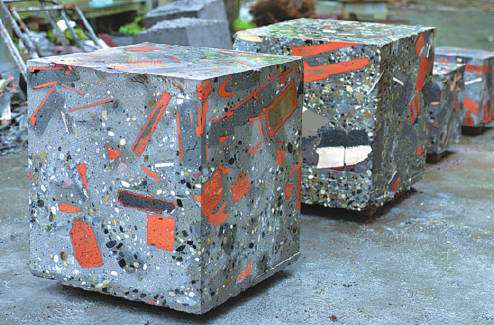From rubble, art and new life spring
 |
|
Cement cubes made of construction waste collected from a family's home with their address on them. [Photo provided to China Daily] |
Many residents have asked him to create a cube for them, he says. Previously they just seemed curious about what his job was and were confounded by his interest in collecting waste.
These cubes will later be used as stools in public spaces in the area, recounting in their special way the history of the old shantytown.
"What I appreciate about this is that people will recognize themselves and their past when they see these stools, instead of simply erasing the past when a new town is set up," Hu says.
His team also collected bricks in ruins to engrave people's wishes on them and build them into a memorial wall.
"The locals are very down-to-earth people. They'll say straight out 'I want to make a fortune.'," Hu laughs. "Some write poems."
Another artist, Zhao Ming, focuses more on the emotions of people, doing so by using pictures and sound. Zhao and her team are from the China Academy of Art in Hangzhou, Zhejiang province. They spent a busy week in the shantytown, mainly recording sounds, including voices. This included people chatting, peddlers hawking their wares, running scooters, dogs barking and the hum of insects in vegetable gardens. They also came across a local opera society in a tea house and recorded what Zhao calls "the voices of art".
"Life here is very slow and easy. In fact, people here don't seem to be as driven with lust as big-city folk are."
Zhao reckons that those who inhabit the shantytown are mainly children, middle-aged or older people. Young people seem to prefer living on the left bank, where the downtown area is, she says.
















